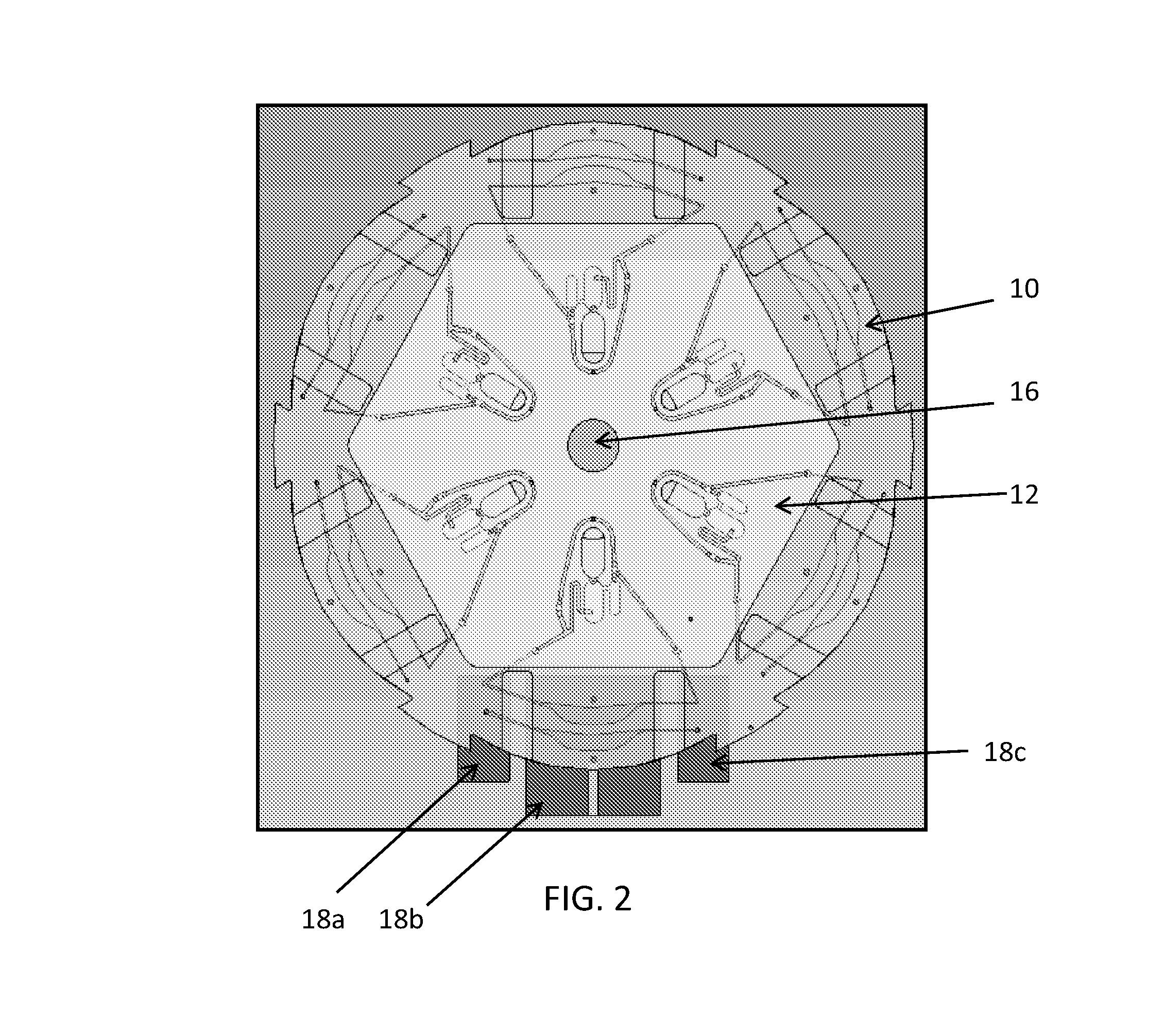Centrifugal microfluidic system for nucleic acid sample preparation, amplification, and detection
a microfluidic system and nucleic acid technology, applied in the direction of positive displacement liquid engines, instruments, glassware, etc., can solve the problems of large amount of material, labor and time, complex structure, and large amount of steps, and achieve the effect of preventing siphon repriming, reducing labor intensity and time, and improving efficiency
- Summary
- Abstract
- Description
- Claims
- Application Information
AI Technical Summary
Benefits of technology
Problems solved by technology
Method used
Image
Examples
Embodiment Construction
[0031]FIG. 1 illustrates a top down view of a portion of a microfluidic compact disc (CD) 10 having a microfluidic feature 12 capable of conducting both lysis and PCR on a CD. The microfluidic CD 10 is typically a multi-layer structure made of one or more PDMS layers sandwiched between polycarbonate (PC) discs using a pressure-sensitive adhesive (PSA). U.S. Patent Application Publication No. 2008-0110500, which is incorporated by reference herein, describes additional details regarding the constructions and methods of manufacturing microfluidic features 12 in the microfluidic CD 10. The microfluidic CD 10 has a center of rotation and includes an aperture 14 for receiving a shaft 16 of a motor or the like that is used to impart rotational motion to the microfluidic CD 10.
[0032]The microfluidic CD 10 is shown above a plurality of Peltier thermoelectric devices (TE) labeled as 18a, 18b, and 18c. These TE devices 14a, 14b, and 14c may be mounted on a heat sink C as illustrated in FIG. 3...
PUM
| Property | Measurement | Unit |
|---|---|---|
| volume | aaaaa | aaaaa |
| volume | aaaaa | aaaaa |
| diameter | aaaaa | aaaaa |
Abstract
Description
Claims
Application Information
 Login to View More
Login to View More - R&D
- Intellectual Property
- Life Sciences
- Materials
- Tech Scout
- Unparalleled Data Quality
- Higher Quality Content
- 60% Fewer Hallucinations
Browse by: Latest US Patents, China's latest patents, Technical Efficacy Thesaurus, Application Domain, Technology Topic, Popular Technical Reports.
© 2025 PatSnap. All rights reserved.Legal|Privacy policy|Modern Slavery Act Transparency Statement|Sitemap|About US| Contact US: help@patsnap.com



